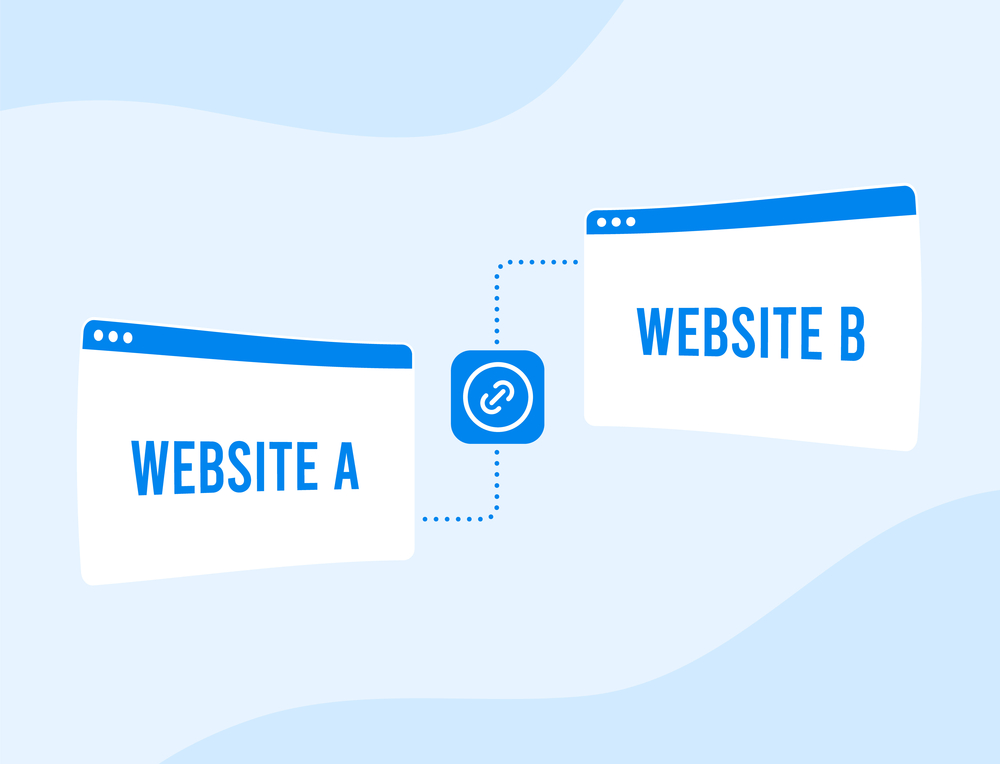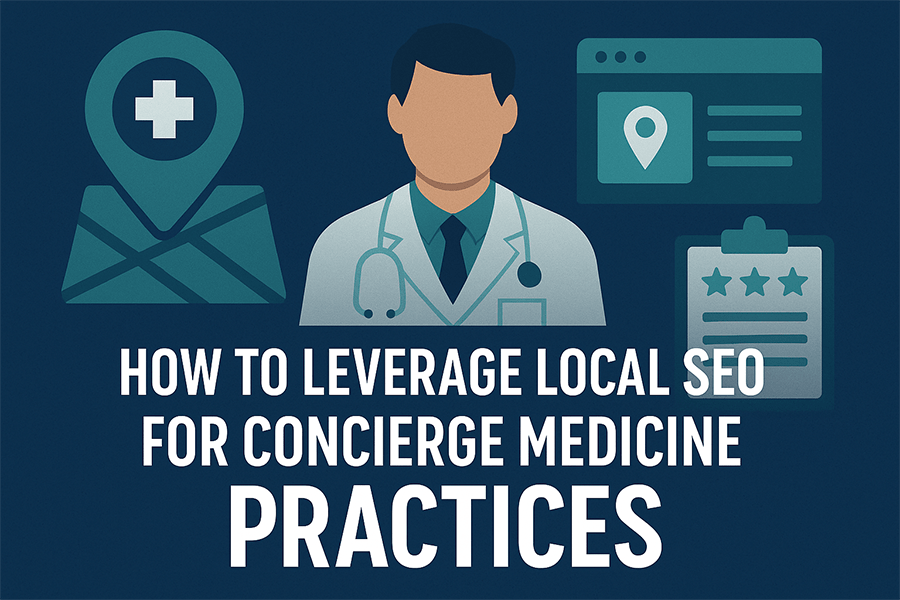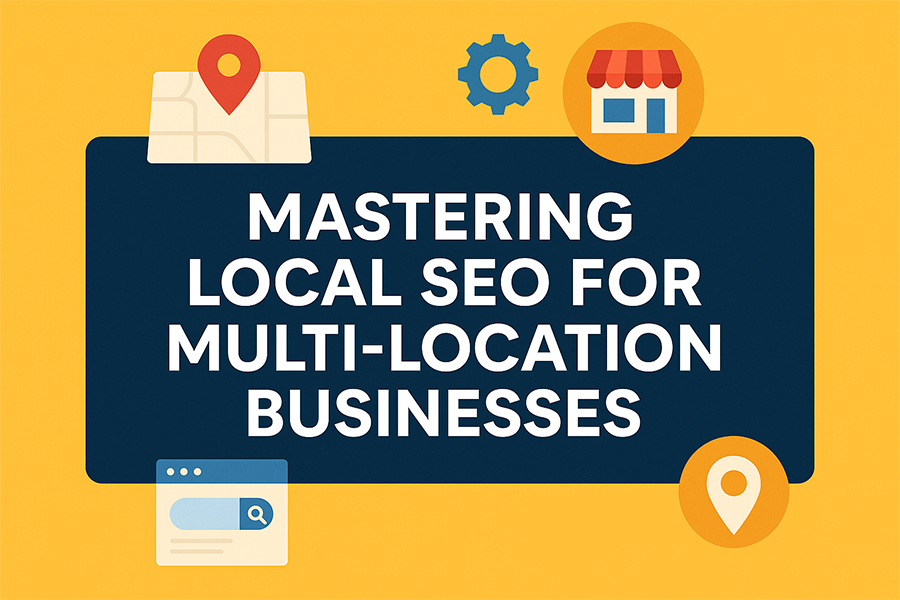
In today’s digital age, having a strong online presence is vital for cardiologists looking to attract new patients. Most people now turn to search engines and online resources when seeking medical specialists – in fact, about 77% of patients look for doctors online.
To ensure your cardiology practice stands out, your website needs to rank high on search engine results. One of the most impactful ways to boost rankings is through backlink outreach. Backlink outreach strategies for cardiologists involve proactively securing links from other reputable websites back to your own.
These backlinks act like endorsements or “votes of confidence” in the eyes of Google, signaling that your practice is a trusted authority in heart health. In this guide, we’ll walk you through proven link building and link development strategies tailored specifically to cardiology practices. (By the end, you’ll have a clear roadmap to outshine competitors and improve your SEO, all while staying ethical and SEO-friendly.)
Why Backlink Outreach Matters for Cardiologists
Backlink outreach is a cornerstone of effective cardiology marketing. High-quality backlinks do more than just inflate a number – they enhance your credibility, search visibility, and patient trust.
For medical professionals, Google places heavy emphasis on expertise and trustworthiness (think E-E-A-T: Experience, Expertise, Authoritativeness, Trustworthiness). Every authoritative site that links to you is essentially vouching for your content’s reliability.
Especially in the medical field (considered a “Your Money or Your Life” category), quality backlinks can significantly boost your SEO while also reassuring potential patients that your practice is reputable. In short, when cardiology websites earn links from respected health blogs, medical organizations, or local news, it helps them rank higher and attract more patients – a win-win for your practice’s growth.
Below are some of the best link building and outreach strategies – each tailored to help cardiology practices acquire valuable backlinks. We’ll explore both traditional link building methods and creative outreach ideas specific to the healthcare industry. Use these strategies in combination for a well-rounded link development campaign.
1. Guest Blogging on Authoritative Medical Sites
One of the most effective ways to build quality backlinks is through guest blogging on reputable health and medical websites. By contributing an informative article to a popular health blog or a cardiology journal online, you can usually include a backlink to your site in your author bio or content.
This not only drives referral traffic but also signals to search engines that your site is being cited by authoritative sources. For cardiologists, consider writing about heart-health topics you’re passionate about. For example, you might contribute a piece on “Latest Advances in Treating Atrial Fibrillation” to a well-known medical blog or a general healthcare site. Ensure the site is relevant (e.g., healthcare news sites, patient education blogs, or even hospital websites) and has a good reputation.
Guest posts on esteemed health-related websites are a standout method for attracting high-quality backlinks. When readers see your content on trusted platforms, it also elevates your personal brand as a physician. Tip: When pitching a guest post, mention your credentials as a cardiologist and propose topics that fit the target site’s audience.
This shows both expertise and relevance, increasing your chances of acceptance. Over time, a handful of strong guest posts can significantly boost your domain authority and search rankings.
2. List Your Practice in Medical Directories and Citations
For a cardiology practice, online directories and local citations are low-hanging fruit for backlinks. Make sure to claim or create profiles on popular healthcare and local business directories. These profiles often allow a link to your website and help patients find you more easily. Key places to start include:
- Google Business Profile (Google My Business) – Ensures you appear in local map results and provides a backlink to your site.
- Healthgrades, Vitals, WebMD – Healthcare-specific directories where patients search for specialists. Having a complete profile (with your website link) here boosts both visibility and credibility.
- Insurance Provider Directories – If you accept certain insurance plans, ensure your practice is listed on the insurer’s “find a doctor” online directory (with a link if possible).
- Local Business Directories – Sites like Yelp, Yellow Pages, or Chamber of Commerce listings for your city often have healthcare categories.
These directory backlinks might be “nofollow” in some cases (meaning they may not pass SEO value directly), but they still contribute to your online presence and can drive traffic. More importantly, consistent listings with your name, address, and phone (NAP) across the web improve your local SEO.
For example, adding your practice to Healthgrades and WebMD not only gives you valuable backlinks, but also helps you appear in local health-related searches. Don’t forget niche directories too – for instance, the American Heart Association or local heart health nonprofits might have “find a provider” pages.
By listing your cardiology practice on all relevant platforms, you secure foundational backlinks and make it easier for patients to find and trust you.
3. Partner with Local Healthcare Organizations & Events
Building links isn’t just an online endeavor – your offline professional relationships can translate into powerful backlinks. Collaborate with local healthcare organizations, hospitals, or community events and make sure those partnerships are reflected online.
For example, if your clinic sponsors a local heart health fair or charity run, the event’s website will often thank sponsors with a link to their websites. Likewise, giving a free lecture on heart disease at the community center or hosting a CPR training at your clinic could earn you a mention (and link) on the organizer’s site or in a local news article. Sponsoring local health events can lead to mentions and backlinks from community websites and news outlets.
Additionally, consider joining local business groups or healthcare associations – many have member directories on their sites. When partnering with any organization, kindly request that they include a link to your website when mentioning your practice online. Not only do these local backlinks boost your SEO, they also drive local referral traffic.
People reading about a local event or organization can click through to learn about the cardiologist who is involved in the community. This strategy enhances your reputation offline and online simultaneously, showcasing you as an active, caring member of the community. It’s a natural way to earn trust – both from people and search engines.
4. Leverage Press Releases and Media Outreach for Coverage
Getting featured in the media can provide some of the highest-authority backlinks to your site. Whether it’s a local health segment or an online publication, being mentioned as a trusted cardiologist boosts both visibility and domain authority. Two key methods for media outreach are press releases and tapping into modern PR platforms that connect experts with journalists.
Press Releases
Whenever your practice has newsworthy updates — opening a new location, launching a new service, participating in a medical study, or hosting a community event — consider creating a professional press release. These can be distributed through platforms like:
- PR Newswire
- Business Wire
- Newswire.com
- Local news stations and health publications
While some syndicated press release links are marked “nofollow,” they still increase visibility and often lead to organic media coverage, which can generate high-authority, followable backlinks if picked up by journalists or bloggers.
To maximize your chances:
- Include quotable expert insights in your release.
- Make sure your press release is clear, concise, and free of medical jargon.
- Include a link back to your website (ideally to a relevant service or blog page).
- Submit to local outlets as well — many city news sites are looking for stories tied to healthcare, especially when they relate to public health.
Expert Commentary via Qwoted, Help a B2B Writer, and Featured
Since HARO (Help a Reporter Out) has shut down, a few strong alternatives have emerged where cardiologists and healthcare professionals can still get quoted:
- Qwoted: A fast-growing platform connecting journalists with expert sources. You can create a free profile and get notified when reporters are looking for insights on healthcare topics like heart disease, new treatments, or wellness.
- Help a B2B Writer: Although it’s geared more toward business writing, many content creators working on health-related SaaS or product features still need medical voices — and they’re often open to linking back to your site if quoted.
- Featured: A question-and-answer platform where you can contribute insights directly to articles that are later published by partner sites. Often includes a backlink if your quote is featured.
By offering expert commentary on these platforms, you can naturally earn backlinks from reputable blogs, health magazines, and media outlets. For example, if a journalist is writing an article on “Tips for Heart Health During the Holidays,” and you provide a tip they publish, they’ll often credit you with a backlink to your practice’s website.
These strategies help position your practice as a trusted authority while simultaneously improving your SEO. And the beauty is, you don’t need to chase every opportunity — just one quote on a high-authority site can provide a powerful backlink and increase your digital footprint.
5. Create High-Quality, Shareable Cardiology Content
At the heart of any successful link building campaign is link-worthy content. Before doing outreach, make sure your own site offers valuable resources that people want to link to. For cardiologists, this means creating content that is educational, engaging, and authoritative on heart health topics. Some ideas include:
- In-depth Patient Guides: e.g. “Complete Guide to Managing High Blood Pressure” or “What to Expect From Your First Cardiology Appointment.” Comprehensive, well-structured guides can become go-to resources for patients and even other websites to reference.
- Infographics: Visual content about heart disease statistics, the anatomy of the heart, or heart-healthy lifestyle tips can be highly shareable. Infographics are often picked up by blogs or social media, sometimes earning you credit and a backlink when they share it.
- Videos and Webinars: Short explainer videos (like how a pacemaker is installed, or simple exercises for a healthy heart) embedded on your site can attract links, especially if you share them on YouTube and others embed your video.
- Blog Posts on Trending Topics: Stay updated with the latest in cardiology (new studies, technologies, or even tying in with “Heart Health Month” each February). Timely posts can earn backlinks if they fill a knowledge gap or provide expert commentary on news. For instance, a blog debunking myths about cholesterol might get referenced by smaller health sites or forums.
When creating content, remember Google’s focus on E-E-A-T for health topics. Make sure your content is accurate, up-to-date, and authored or reviewed by medical professionals (you, or cite credible sources). Not only will this help your SEO directly, it also means when you reach out to other sites asking them to link to your resource, they’ll see it’s high quality and feel confident sharing it.
For example, if you create a well-designed infographic about early warning signs of heart disease, you can reach out to general health blogs or even local news sites with, “Hey, we’ve made this useful infographic – feel free to use it with a credit link.”
High-quality content gives you something to offer in exchange for a backlink, rather than just asking. It’s the cornerstone of earnable backlinks – many sites will link to you naturally over time if you consistently publish great cardiology content. Plus, having robust content on your site means that when someone clicks a backlink to you, they find value (which increases the likelihood of conversions and further sharing).
6. Collaborate with Health Influencers and Bloggers

Influencer marketing isn’t just for fashion or tech – it can work for healthcare too. There are numerous health influencers, bloggers, and social media personalities who focus on wellness, fitness, or patient advocacy. Forming relationships with these individuals can open doors to backlink opportunities. How might this work for a cardiologist?
Consider identifying a few influencers whose content aligns with heart health or general wellness. For example, a popular nutrition blogger who often writes about heart-healthy diets, or a fitness YouTuber focusing on healthy living, could be a good match. You could reach out to them to collaborate on content. Maybe you co-author a blog post about exercise and heart health, or you participate in a live Instagram Q&A on heart disease prevention
In exchange, the influencer could mention and link to your website in the content or description. For instance, an influencer might write, “I consulted with cardiologist Dr. Smith (link to Dr. Smith’s clinic website) to get expert tips on cardio exercises that strengthen your heart.” Such a mention provides a natural, relevant backlink.
Another angle is patient influencers – individuals who have large followings because of their health journey. You might connect with a patient who’s an advocate for heart disease awareness. They could interview you on their blog about medical insights, again linking to your practice.
When doing influencer outreach, always approach sincerely: let them know what value you can offer their audience (e.g., expert knowledge, myth-busting some trendy misinformation, etc.). Many influencers are happy to feature expert guests because it boosts their content’s credibility.
Just ensure the influencer’s persona aligns with professional ethics (you want to partner with people who spread accurate health info). These partnerships not only earn you backlinks from the influencer’s blog or website, but can also greatly expand your reach to new audiences (through social shares). It’s a modern twist on outreach that combines PR, SEO, and networking. And because the content is usually collaborative, the backlinks come off as very organic and trustworthy.
7. Cross-Promote with Complementary Medical Practices
No practice operates in a vacuum – cardiologists often work closely with other healthcare providers. You can leverage these professional connections for mutual backlink growth.
Cross-promotion with complementary practices means teaming up with doctors or clinics in related fields (but not direct competitors) to share content and links. For example, a cardiologist could partner with:
- Primary Care Physicians: Many primary care or family doctors refer patients to cardiologists. Perhaps you can write a guest article for a primary care clinic’s blog about “When to Refer a Patient to a Cardiologist” or “Tips for Heart Health that GPs can share,” and include a link back to your site. They in turn might be featured on your blog in an article about general wellness, linking to their site.
- Dietitians/Nutritionists: Diet is crucial in cardiology. You could have a local dietitian contribute a healthy eating article on your blog (linking to their site), and you contribute a piece on their blog about the importance of diet in preventing heart disease (linking to your site).
- Physical Therapists or Fitness Coaches: For cardiac rehabilitation or general fitness, link up with a physiotherapy clinic or a trainer who writes about exercise. You could cross-link content about safe exercise routines post-heart-surgery, etc.
- Other Specialists: Think endocrinologists (for diabetes and heart disease connections), pulmonologists (heart-lung health links), etc. A collaborative article or a case study together can be shared on both sites with mutual links.
The idea is to create content swaps or shout-outs that benefit both parties. This is not the same as shady link exchanges (“you link to me on a random page, I link to you”) – instead, it’s about content-driven linking. The content on each site features the other in a meaningful way. Search engines favor these natural, relevant cross-links.
By connecting with other healthcare providers in your community or network, you can forge significant partnerships and acquire invaluable backlinks. Plus, your patients get a bonus: they discover allied services (like a trusted dietitian) through your site, which adds value to their experience.
When executing this strategy, approach colleagues you genuinely respect and suggest a collaborative idea that will be useful to both your audiences. It strengthens your professional network and both websites’ SEO at the same time.
8. Analyze Competitor Backlinks (Using Ahrefs)
Sometimes, the best way to find new backlink opportunities is to study what your competitors are doing – and then do it even better. This is where tools like Ahrefs come into play. Ahrefs (along with similar SEO tools like SEMrush or Moz) lets you inspect the backlink profiles of other websites. If you want to outrank other cardiology clinics or hospitals in your area, start by researching their backlinks.
How to leverage Ahrefs for link building: Let’s say a competitor cardiologist’s site is ranking above yours on Google. You can use Ahrefs’ Site Explorer to plug in their website URL and see all the other sites that link to them. This can be illuminating. You might discover, for example, that they’ve gotten links from a local news article, a university health resource page, a couple of guest posts, and a mention on a heart health blog. This immediately gives you a roadmap of where you might also seek links.
Maybe you can reach out to that heart health blog and suggest a new article (as we discussed in guest blogging). Or you notice they’re listed on a “Top Doctors in New Jersey” list on a certain site – you could try to get included on that list as well. Using tools like Ahrefs to analyze competitors’ backlinks helps pinpoint high-value link opportunities that you might otherwise miss.
Additionally, competitor analysis can reveal the type of content attracting links in your niche. If you see their guide on “choosing a cardiologist” has tons of backlinks, you might create an even more comprehensive or updated guide on that topic and promote it (the classic “skyscraper technique” in SEO). Ahrefs will also show you the anchor text others use to link to them – if many links say “best cardiologist in [City]”, that’s a clue those are local directories or review sites you should be on.
Remember, the goal isn’t to copy exactly what competitors did, but to learn from it. You can often identify patterns of successful outreach. This data-driven approach ensures you focus your efforts on backlinks that matter. Instead of blindly emailing random sites, you’re targeting sources that already deemed a site like yours link-worthy. With some creativity, you can convince them that your content is equally (or more) deserving.
Ahrefs basically acts as your compass in the link building journey, showing where the strong backlinks lie. It’s an essential tool for any SEO-savvy cardiologist or their marketing team. (Pro tip: look at a few top competitors, compile a list of unique sites linking to them, and prioritize those that are relevant to cardiology. Then, reach out with your own twist or resource.)
9. Implement Niche Edits and Broken Link Building
To round out your outreach arsenal, consider more advanced tactics like niche edits and broken link building. These strategies involve inserting your link into existing content on other websites – a bit different from creating new guest posts. Here’s how they work:
Niche Edits (Link Insertions)
A niche edit is when you get a link added to an article or page that’s already published on someone else’s site. For instance, suppose you find a well-ranking blog article about “managing high cholesterol” that doesn’t mention anything about cardiologists or when to see one. If you have a relevant page on your site (say, a blog about the importance of seeing a cardiologist for cholesterol issues), you could reach out to the site owner.
Politely suggest that their article could be even more helpful by adding a point about consulting a cardiologist for high cholesterol, and recommend your page as a reference link. Essentially, you’re offering to add value to their existing content with your expertise, and in return, you get a link. This works best when the content is closely related to your field and is of high quality. The site owner should feel that linking to you genuinely improves their article (not just that you want a backlink). It’s a subtle form of outreach that can yield great results if done selectively and honestly.
Broken Link Building
Websites change or disappear all the time, which means many sites have outbound links that lead to dead pages (404 errors). Broken link building takes advantage of this by finding broken links on other sites and suggesting your content as a replacement. For example, you might discover a hospital’s blog post from years ago about heart health that links to a resource that no longer exists.
If you have (or can create) content covering that same topic, you can inform the webmaster that “Hey, I noticed your page is linking to XYZ, which is no longer available. I have a similar article that might be a great replacement for your readers – feel free to use it.” This approach is helpful because you’re doing them a favor (nobody wants dead links on their site) while scoring a backlink for yourself. Tools like Ahrefs can actually help find broken backlinks on other sites, or you can manually hunt for them on high-authority pages in your niche.
Both niche edits and broken link outreach require a tactful, personalized approach. You’ll want to ensure your content truly fits and is high quality. The success rate for these might be lower than some other methods (webmasters are busy and might ignore requests), but when they do work, you gain a link on a page that’s already established and potentially getting traffic. That’s huge for SEO.
For healthcare specifically, always check that the site you’re approaching is medically credible. If you find broken links on .edu or .org health resource pages, those are prime targets – replacing a broken citation on a .edu site with your link could be a jackpot for authority.
In summary, niche edits and broken link building are about finding existing opportunities where your link naturally fits, rather than creating new content externally. They round out your backlink strategy by capturing links that others left on the table.
Bonus: Outreach Best Practices for Success
No matter which outreach tactics you pursue from the list above, there are a few golden rules and best practices to keep in mind. These will improve your success rate and ensure your link building remains ethical (and effective) in the long run:
- Personalize Your Outreach: Whether you’re emailing a blog editor for a guest post or a site owner for a broken link fix, avoid generic templates. Mention something specific you liked about their site or article. A personal touch shows you’ve done your homework and aren’t spamming hundreds of people. For example, start with “Dr. Jones, I enjoyed your recent article on heart disease in women…” instead of a canned intro.
- Highlight Mutual Benefit: Make it clear what’s in it for them. Maybe your content can fill a gap in their article, or your expert quote will enrich their story, or your guide will deeply benefit their readers. When people see value for their audience, they’re more inclined to link. Backlink outreach is a two-way street – you get a link, they get quality content or information.
- Be Professional and Patient: As a healthcare professional, your tone should be courteous and professional. Also, expect that you won’t hear back from everyone. It’s okay to send a polite follow-up after a week or two if someone doesn’t respond, but don’t bombard inboxes. Often, building relationships takes time. A blogger might not accept your guest post idea initially, but if you keep providing helpful comments on their posts or interact on social media, a rapport builds that could lead to a link later.
- Quality Over Quantity: It’s better to have 5 excellent backlinks from relevant, authoritative sites than 50 links from low-quality or unrelated sites. Avoid the temptation to use shady methods like buying links or joining private blog networks – these can do more harm than good. Google is very clear that manipulative link schemes can lead to penalties. Focus on earning links naturally through the quality of your content and outreach. In healthcare SEO, trust is everything, so one link from a .gov or .edu or respected medical blog is worth its weight in gold compared to dozens from random websites.
- Monitor Your Backlink Profile: Use tools (again, Ahrefs or Google Search Console) to keep an eye on new links to your site. This helps you see which strategies are paying off. It also lets you disavow any spammy links that might unexpectedly pop up, protecting your site’s integrity. Regular monitoring and adjustment is part of a healthy link building campaign – as we always tell clients, SEO is an ongoing process.
By adhering to these best practices, your outreach efforts will not only yield more backlinks but also build positive relationships and a strong online reputation over time. Each email or message you send reflects your practice’s brand, so approach outreach as networking, not just link begging. Over time, you’ll become known in the online health community, making future outreach even easier.
Conclusion
Building a robust backlink profile is a journey, not a destination – especially in the medical field where trust and authority are paramount. By implementing these top backlink outreach strategies for cardiologists, you’ll steadily improve your site’s visibility on search engines, driving more potential patients to your virtual doorstep.
From writing guest posts on medical blogs to engaging with local organizations and leveraging tools like Ahrefs for smart prospecting, you now have a game plan to outperform competitors. Remember that quality and relevance are key: a few authoritative backlinks obtained through genuine outreach will outweigh dozens of low-quality ones. Also, integration is important – link building works best alongside other SEO efforts like quality content creation and local optimization. (For example, pairing your backlink campaign with a solid cardiology SEO strategy can amplify results.)
In the competitive world of healthcare, those who actively cultivate their online presence will have the edge. By reaching out, building relationships, and showcasing your expertise, you’re not just climbing Google’s ranks – you’re also spreading heart health knowledge and building trust within your community. It’s a rewarding process on multiple levels.
Finally, don’t hesitate to seek professional help if needed. Managing outreach, content, and SEO can be time-consuming, and your primary focus is patient care. Consider partnering with specialists (like a healthcare SEO agency) if you need an extra boost – after all, even the best doctors collaborate with others for optimal outcomes.
Lead to Conversion’s team, for instance, offers dedicated healthcare link building services to handle the heavy lifting of securing authoritative links for you. Whether you go DIY or get expert assistance, investing in backlink outreach is investing in the future growth of your cardiology practice. Here’s to higher rankings, more patients, and a heart-healthy web presence for your clinic!





